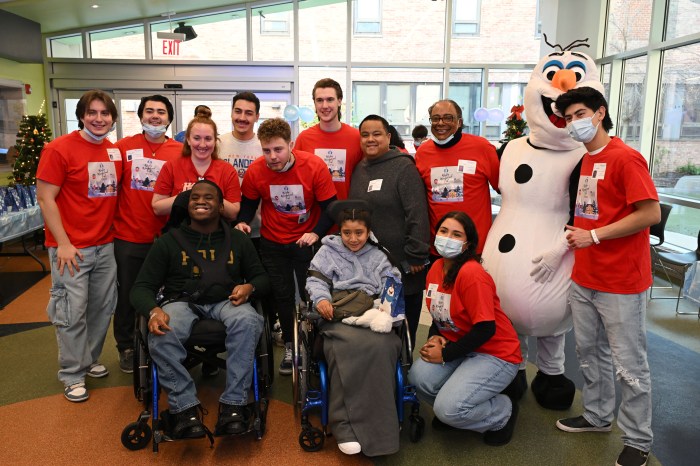Life was not easy for Phil Konigsberg when he was growing up. As a child and teenager, he faced more challenges than most. When he was only two years old, he was stricken with polio, and his loving family and doctors did everything they could to help him.
He told his story at the Hospital for Special Surgery’s (HSS) 150th anniversary symposium, thanking Dr. David B. Levine, his former spine surgeon, and the hospital for saving his life.
Konigsberg, now 61, was among numerous speakers who came together to celebrate the hospital’s milestone at the symposium this past month. In addition to HSS patients who told their inspirational stories, the event featured noted historians, scholars, scientists, physicians and health policy thought leaders from around the country. Konigsberg explained that the polio caused scoliosis, and by age seven, he was in a turnbuckle cast to correct his spinal curve.
“I thought of it as a ‘mummy’ cast,” he said. “I remember a doctor periodically turning the metal turnbuckle attached to the cast, attempting to straighten my back while I was lying in bed.
He was supposed to be in the cast for nine months, but at six months, he developed pneumonia. He remembers being rushed to Hospital for Special Surgery.
“I know that I almost died that night. I recall being transferred by ambulance from HSS, which is an orthopedic hospital, to another hospital that had a special pulmonary unit. I had an emergency tracheotomy to enable me to breathe, and then I was put into an iron lung,” he said. “I recovered over the course of a year-and-a-half.”
In 1968, at age 17, Konigsberg had a critical decision to make.
“I remember being told by Dr. Levine and my parents that I was running out of time to have a spinal fusion operation, and that if I chose not to have the surgery, I was faced with the scoliosis continuing to get worse and eventually crushing my organs.”
The good news was that Dr. Levine was performing the surgery with relatively new instrumentation called “Harrington Rods” that reduced the curvature and provided more stability to the spinal fusion.
“Harrington Rods were a major advance in scoliosis treatment,” Dr. Levine explained. “In Phil’s case, we weren’t sure if he would need one operation or three surgeries, but we were able to correct his problem with the first procedure. We were all very happy about that.”
At the symposium, Dr. Levine asked Konigsberg what he remembered about his hospital stay.
“I am forever grateful to Dr. Levine and to Dr. James P. Smith, my pulmonologist, for each being my personal lifesavers,” he continued. “I strongly doubt I would be able to stand here today had they not been part of my life.”
Despite the breathing problems caused by polio, Konigsberg managed to graduate from St. John’s University and then enjoy a successful career in the insurance industry. In 1973, he became a founder of the Jamaica Estates-Holliswood-South Bayside Volunteer Ambulance Corps, of which he is a life member. He is the community advocate of the Queens Tobacco Control Coalition and has been a smoke-free advocate for the past 25 years. This year he will celebrate his 25th wedding anniversary.
Scoliosis treatment has come a long way since the 1960s, according to Dr. Levine, author of the new book, Anatomy of a Hospital, about the 150-year history of HSS.
“From the full-body plaster cast that patients wore in the 1950s, to the Harrington Rods, to improved rod implants and better techniques used today, there’ve been tremendous advances,” said Dr. Levine.
Today, people who have scoliosis surgery can usually go home after a week in the hospital, and before long, they can return to school or to work.
RECOMMENDED STORIES




































